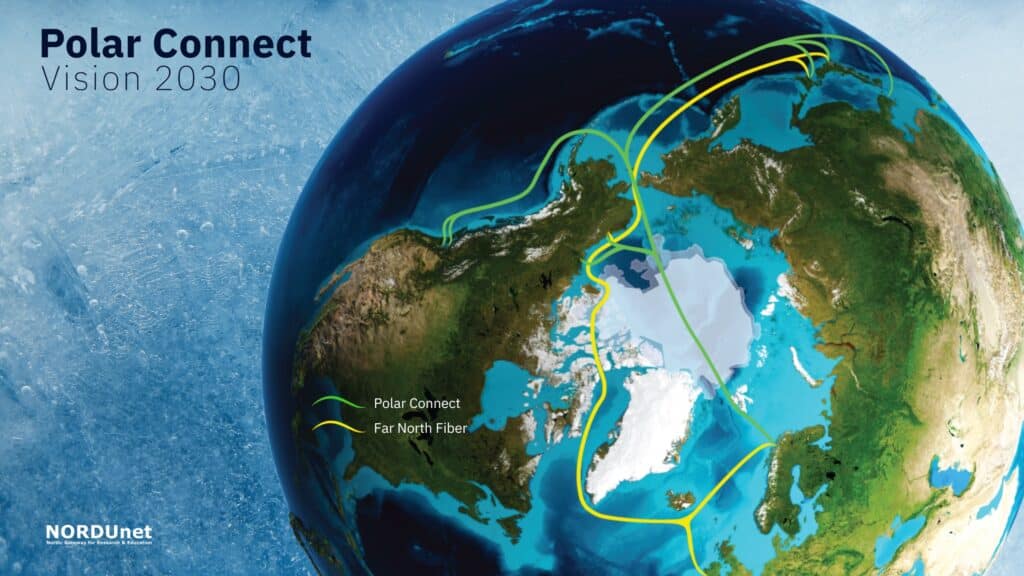The ambitious project Polar Connect, driven by the European Union with an initial funding of 6 million euros, aims to establish a submarine cable connecting Japan to Europe through the Arctic. This cable, led by NorduNet, would provide an alternative route to traditional cables that pass through the U.S. and Canada, offering greater privacy, security, and lower latency in communications between Asia and Europe.
However, building infrastructure like this in the Arctic poses enormous technical and financial challenges, which have kept these initiatives in the theoretical realm for decades.
A Large-Scale Project with Unquantifiable Risks
The Polar Connect project is evaluating two possible routes to connect Asia with Europe without relying on infrastructure in North America:
- Route through the North Pole
- Route through the Northwest Passage
Both routes could provide a low-latency option for traffic between Tokyo and Europe, which would be particularly attractive to financial firms and high-frequency traders. Additionally, the cable could incorporate scientific sensors to study climate change, marine life, and the evolution of polar ice caps.
However, deployment in the Arctic is technically complicated and financially costly. Despite initial estimates of 180 million euros, experts in submarine infrastructure suggest that the actual investment could exceed 500 million euros, due to the need for icebreakers, specialized vessels, and extreme maintenance.
Factors Driving Up Costs
- Need for icebreakers: At least two icebreakers would be required to escort the ship responsible for laying the cable.
- Hostile geography: The cable would have to cross deep seas, floating glaciers, and areas with shifting ice, increasing the risk of mechanical damage.
- Maintenance costs: Repairing cables in the Arctic could be three times more expensive than in other regions due to the scarcity of specialized vessels and extreme weather conditions.
- Erosion and physical damage: The presence of floating glaciers can lead to cable destruction, as recently occurred with the Quintillion Cable in Alaska, which was rendered inoperable for six months following a similar incident.
Is it Financially and Strategically Viable?
Despite its potential advantages, the high cost and complexity of the project could deter investors and telecom operators. Currently, Internet backbones are already struggling to recoup their investment in traditional submarine cables, making the prospect of paying a market premium for a cable prone to failures in the Arctic less appealing.
Furthermore, the expectation that global warming will facilitate operations in the region is long-term. While some countries are investing in new shipping routes and resource exploration in the Arctic, the commercial viability of the cable remains uncertain.
Conclusion:
The Polar Connect project represents an innovative effort to develop a faster and more secure communication route between Europe and Asia. However, technical and financial challenges could delay its implementation until beyond 2030. In the meantime, global operators may continue to prefer traditional routes, leaving the Arctic as more of a futuristic project than an immediate reality.
References: Nordu.net, Swedish Polar, SubSeaCables I, and SubSeaCables II

